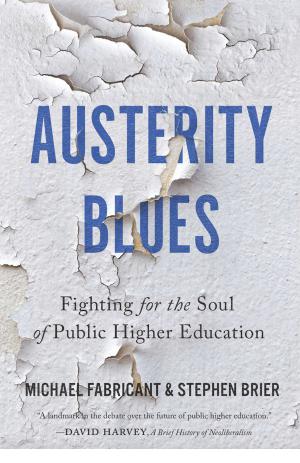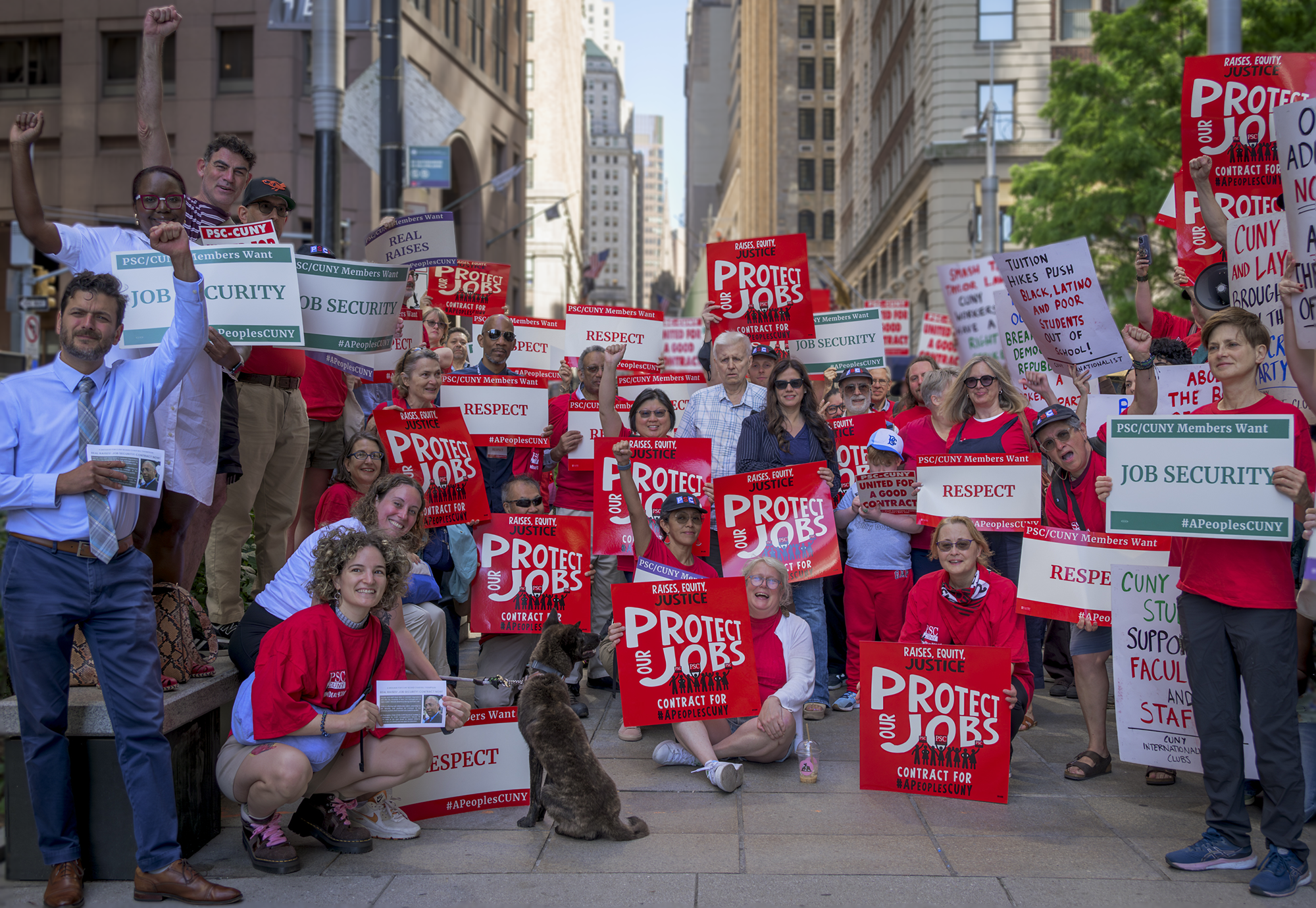The neoliberal university at work
The conventional narrative of globalization is all too familiar. The economy of the United States and every other nation must fit into a global architecture of economic development. There is no alternative to this scaling up; the only two options are to fit in or die. It is on this basis that US public higher education is especially susceptible to increasing demands for profit-making on public goods in the new global marketplace.

Higher education offers a market that some believe, in this era of austerity and privatization, must be reassembled and distributed through the circuitry of emergent online technologies. Consistent with this belief, higher education is especially well positioned to develop partnerships with the private sector in online knowledge dissemination, with a particular emphasis since 2012 on massive open online courses or MOOCs. Venture capitalists have largely been responsible for underwriting, distributing and marketing these online higher education products. Their investments were predicated on an assumption of large revenue streams and profits generated by MOOCs and other distance-learning “solutions,” even as they were originally touted to the public as making higher education more broadly accessible by serving hundreds of thousands of students online.
CORPORATE ONLINE LEARNING
Various high-profile efforts to employ MOOCs at colleges and universities across the country illustrate the tactics used by marketplace entrepreneurs to monetize public higher education. Like K–12 charter schools, privatized online forms of higher education cast the experiences of exemplars as normative. MOOCs were described as maximizing the prospects for positive learning outcomes while they were intended to legitimate the transfer of public dollars to privately managed profit-making ventures in online education.
The momentum for this rapid redistribution of public money into private, corporate online learning has consistently grown over the past decade. What accounts for the growing support for this explosive, rapid change in agenda? Locating and exploiting new sites of profit-making in a moment of economic crisis is one of the driving forces for the long-term transformation of public higher education. As noted in chapter one [of Fabricant and Brier’s new book Austerity Blues], the 2013 Davos conference specified higher education as an especially important and emergent profit-making center globally. The fit between higher education and global profit-making aligns with the expansive “consumer reach” of a growing raft of distance-learning courses and programs. Equally important, the transformation of some national economies into global knowledge centers such as Singapore and Abu Dhabi elevates the importance of universities in the further commodification of knowledge. Finally, the hunger for elite degrees – particularly within emergent international economic powers like India and China – makes US distance-learning course offerings especially attractive.
HIGHER ED FUNDING TRENDS
 |
The commodification of higher education has particular salience for the United States. The US economy has few sectors that have remained internationally competitive. Certainly, technology and higher education are two areas that remain robust. High-tech corporations are a growing part of the US economy, but 47 percent of all profits are earned by the financial sector. These trends do not bode well for the overall economy. In effect, too much profit-making is located in an essentially unproductive sector of the economy. The commercialization of higher education, however, does represent an important corrective for the economy. It promotes profit-making in a sector of the US economy that is recognized internationally as dominant, as the United States can still claim 47 of the 100 “best” universities worldwide.
Another spur for the restructuring of public higher education is heightened uncertainty regarding its financing in an era of austerity. Over the past decade, public university systems in New York and California have shouldered a disproportionate share of state budget cutbacks. Increases in tuition and in the numbers of enrolled students have provided a partial corrective to this revenue decline. Increased revenue provided by tuition is imperiled by both shifts in policy-making and demographics. President Obama, in his 2013 State of the Union address, pointed his audience to a college scorecard of universities and their relative cost or tuition alongside graduation rates. The president has subsequently proposed a ratings formula for higher education that emphasizes positive outcomes based on these metrics as a precondition for continued federal funding, including student financial aid programs such as Pell Grants and student loans. These metrics may prove as important in redefining public higher education as standardized testing has been in restructuring K–12 public schools.
Present trends suggest that as a matter of policy, public universities will increasingly be assessed on the basis of their ability to contain tuition increases while graduating a greater percentage of their undergraduates more rapidly. That is a recipe for both fiscal and curricular degradation, especially if the tuition caps are not accompanied by increased infusions of public operating funds. The lack of access to increased dollars from tuition will create evermore desperate fiscal circumstances for public universities. When combined with the decline of particular demographic cohorts of students producing some of the expanded enrollments in public universities in the recent past, the situation is exacerbated. Within this context, alternative sources of revenue from fully online, stand-alone courses, which also promise to increase both the geographic reach of the university and, in turn, the number of enrolled students, take on increasing importance. The opportunity to reduce costs by having one teacher, rather than two or even 10, instructing ever-larger numbers of students is especially attractive to academic managers and corporate profit-seekers. The combination of reduced costs and increased revenue in a parched fiscal environment is accelerating the movement of public universities into privatized partnerships, often involving distance learning.
CHANGING THE PUBLIC SECTOR
Public higher education is faced with increased competition for a stable population of students with little wiggle room on tuition costs alongside intensifying public disinvestment. The growing stratification or differentiation of elite from non-elite universities across the globe will continue to affect funding. Elite universities are likely to be the most popular choices for mass consumers and producers of online curricula. Where does this leave non-elite public higher education institutions situated in the second and third tiers? In all probability, these schools will increasingly find themselves struggling simply to sustain their operations. Higher education will no longer be insulated from [economist Joseph] Schumpeter’s dictum regarding the creative destructive properties of capital. As market dynamics create conditions for the rapid proliferation of various forms of online technology and education profit-making, for example, these forces of change will simultaneously destroy (or at least undermine) traditional methods of communication and instruction.
It is within this context that the rapid disappearance of traditional sources of revenue, when combined with the more pronounced competitive disadvantage of non-elite schools in the higher education marketplace, will result in accelerated closings and mergers of greater numbers of schools. Like Rust Belt industrial towns and cities of the Midwest in the 1980s, colleges and universities are more likely to be abandoned because of a lack of resources and an absence of political will to redefine and sustain public institutions in a period of rapid change.
We have outlined a very bleak political and economic landscape of intensifying scarcity, competition, privatization, rapid technological change and recalculation of the meaning and value of a college degree. We are in a new moment of massive change in public higher education. It is the new K–12, the primary battlefield in the reconstitution of the public sector. Change – rapid disruptions and privatized attacks on public higher education as a public good – will increasingly be the new normal. How can or should university faculty and staff respond to these changes? What roles can or should we play to slow or alter the present direction or momentum of change? Many vexing questions animate the thinking of those interested in preserving access, public investment, complex learning, sustained commitment to the needs of challenged learners and investment in faculty. What we do know, however, is that this more muscular, steroid-fueled form of convergent neoliberal policies is rapidly transforming both the learning culture and economic underpinnings of public higher education.
ELITE POLITICS AND ECONOMICS
Jane Wellman, the director of the Delta Cost Project, has indicated that by 2008 the 50 percent mark had been passed in public four-year institutions, with student tuition comprising more than half of operating expenses. As public financing rapidly declines, the privatized costs of increased tuition and personal debt have soared. Ordinary American families are required to pony up more and more of their meager incomes to acquire the necessary certifications that public higher education provided for little or no tuition in the past.
Across the mainstream political spectrum there is growing consensus that tuition hikes are no longer a viable political or economic option. Articles in the Wall Street Journal, Time magazine and The New York Times have lamented increases in student tuition and debt. The story lines consistently cite the experience of the middle class as having greater and greater difficulty meeting the cost of tuition. Consequently, there is an ascendant policy discourse emphasizing fixed or limited increases in tuition. Simultaneously, the pressure to graduate more public university students increases. This policy conversation ignores, however, the economics of debt, greater student need for part-time employment and investment in college readiness as external factors affecting time to degree and graduation rates. It is instead assumed that rates of graduation can be inexpensively accelerated in an austerity environment through internally devised, efficient business models promoting greater productivity on the part of faculty and staff (Kelderman 2013).
Like the prior policy discourse about K–12, the goal is to limit costs while achieving simple quantitative indices of success. For public higher education leaders, the metric of choice is graduation rates. Although this metric has significant legitimacy, it has been uncoupled from continuing disinvestment in public higher education. How can spikes in graduation rates be achieved in the absence of policies that attend to the learning and financial needs of students? And yet that is precisely what is being recommended through both college rating schemes and political rhetoric. As with K–12 testing reforms, the desired collegiate outcomes – whether through testing or faster graduation – are expected to be driven by efficiencies achieved through some combination of market principles, digital technology and/or outsourcing of teaching labor, all of which are expected to increase productivity.
This argument leaves no room for actual public investment or discussion of larger contexts. The Lumina Foundation, one of the most powerful and influential higher education charitable organizations, publishes analyses and recommendations each year and has had a significant influence on regional and national policy-making. It has consistently endorsed higher and more rapid graduation rates but remains silent on the attendant necessary social investments to make that possible.
Reducing time to degree and increasing graduation rates are clearly laudable goals. No one wants students to take longer to complete their degrees or to drop out. However, public higher education is facing ever-starker revenue generation choices. According to US Department of Education projections, enrollment in colleges will continue to grow until 2021, although the increases will be flatter than the steep climbs seen in the previous decade. The greatest declines will be among students from 18 to 24 years old and least for those over 35. Consequently, public higher education is in a fiscal vise, as it is being asked to manage the contraction of its most stable and expansive sources of privatized revenue-tuition increases and historic rates of expansion of student enrollments while continuing to endure public disinvestment.
This fiscal picture is accompanied by a demand to graduate an increasing number of students, who are expected to reach graduation more quickly as the budgets of public universities are ever more imperiled. This policy agenda is being legitimated by both conservative and liberal media, from columnists such as David Brooks to politicians such as Congressman Paul Ryan, and at the other end of the political spectrum, by official statements of the Obama administration and editorials in The New York Times. There is a broad, mainstream consensus that tuition needs to be curbed and graduation rates increased. Regressive tax policies codifying debt, cutting public services, and enforcing austerity are accepted by both media and policy makers as necessary if not essential to achieving these goals.
THE CURRICULA OF AUSTERITY
Across the nation, policy makers and administrators are increasingly emphasizing a realignment of public higher education curricula to meet the new demands of austerity policy-making. A primary and laudable objective is to expedite a seamless transfer of students from community colleges to senior colleges to promote efficiencies such as accelerated time to degree.
Policy makers and legislators have articulated concerns about the excess credits accumulated by community college students intending to transfer to senior colleges. Those excess credits are described as being a drag on increasingly scarce dollars available for state investment and rapid progress toward attaining a degree. Seamless transfer by integrating senior and community colleges’ curricula and paving new pathways to graduation is seen as a remedy to these inefficiencies. To the extent that students can graduate at higher rates and reduce time to completion without compromising the quality and rigor of their college experience, such policy-making is both rational and laudable.
INCREASING GRADUATION RATES
One of the Lumina Foundation’s core proposals to achieve higher graduation rates is to increase the percentage of Americans holding “high-quality degrees” and credentials to 60 percent by 2025 from 38.3 percent in 2010. It is on this basis that the foundation is advocating legislation to promote seamless transfer. We are left wondering, however, how this goal can be achieved through policies of disinvestment and privatization. Both the logic and the evidence suggest that more rapid movement to graduation accompanied by policies of disinvestment can only be achieved over the long and short term through cut-rate forms of curricula and devalued degrees.
An especially compelling example of how this dynamic is diluting curricula occurred at CUNY. The CUNY central administration developed a program in 2011 called “Pathways” to expedite undergraduate transfer within its extensive, 24-campus system of community and senior colleges. This initiative required a reconfiguration of CUNY’s general education curriculum.
The problem as articulated by administrators was that “of CUNY’s 240,000 undergraduates, more than 10,000 transfer from one college to another each fall.” A high-level CUNY administrator noted that “for more than 40 years, students’ difficulty in transferring their credits was a recognized difficulty that sometimes delayed and even derailed their graduation, a common problem in American higher education.” Alexandra Logue, executive vice chancellor for academic affairs and one of the architects of Pathways, indicated that CUNY required a centralized, system-wide solution to fix this problem. Management therefore proposed that a uniform general education curriculum be instituted across the whole CUNY system. Only in this way, she asserted, could lost credits and, consequently, greater time to degree be corrected. Management argued that the magnitude of lost transfer credits justified a dramatic reconfiguration of the general education curriculum.
 |
Their logic was challenged by faculty. To quickly achieve this goal, the CUNY administration decided to bypass established faculty governance structures in both developing and implementing Pathways. This unilateral decision, legitimated by faculty committees handpicked by CUNY management, resulted in a groundswell of faculty resistance on a number of campuses. Faculty governance structures on five CUNY campuses refused to approve Pathways courses. It was within this context that dozens of faculty resolutions rejecting the process of Pathways’ implementation and the content of the courses passed. Finally, a vote of no confidence in the Pathways curriculum, sponsored by the faculty union, the Professional Staff Congress in the spring of 2013, produced a dramatic outcome. Of the 7,200 full-time faculty at CUNY, more than 4,300 voted, and 92 percent voted no confidence.
FACULTY RESISTANCE
Why did such staunch faculty resistance emerge in response to management’s articulated and seemingly benign intention to solve systemic transfer problems for CUNY undergraduates transitioning from community to senior colleges? To begin with, faculty objected strenuously to the decision to bypass existing governance structures. They argued that it was indicative of management overreach and a violation of a basic precept of university governance embraced widely over the last century that faculty expertise is the linchpin for curricular development and revision. Once that pin is loosened, curricula can be unilaterally changed on the basis of managerial fiat or centralized diktats emphasizing matters of efficiency rather than the historic push-pull between the administrative drive for efficiency and the faculty’s commitment to quality in course structure and content. CUNY faculty also argued that the Pathways curriculum cheapened the general education of CUNY undergraduates.
ERA OF AUSTERITY
It is necessary to cite a few facts about Pathways that link it to the discussion above about the metrics of graduation rates aligning with cheapened forms of curricula during an era of austerity. CUNY management’s claims regarding Pathways are belied by the following facts:
Management never quantified the extent of the transfer problem between CUNY colleges or across the University. This is especially curious given the sweeping changes proposed by Pathways in the name of seamless transfer.
The impressionistic data cited in relationship to the excess credit problem in the primary management document emphasized the lack of availability of course offerings to fulfill graduation and/or major requirements. When combined with a need to take a full load of courses to remain eligible for student grants and loans, the incentives to take additional courses are clear. The latter point was consistently stressed in the Wrigley report as the primary reason for students’ accumulation of excess credits.
Quick and incomplete studies conducted by CUNY faculty on credit transfer issues indicate that the problem is modest when compared to other public universities. The data still do not support the assertion by CUNY management that Pathways is a solution to the problem of transfer.
If Pathways does not solve the problem of transfer, then why was it introduced at all? The answer to that question is, unsurprisingly, embedded in the mushrooming demands of an intensifying regimen of austerity education.
COLLEGE READINESS
In New York City, 70 percent of public high school graduates attending college enroll at CUNY. The conjunction between this fact and issues of the college readiness of this substantial cohort of public school graduates has had powerful consequences, particularly for CUNY community colleges. The New York Times reported in 2011 (about the time Pathways was being conceived) that the number of “remedial students has now swelled so large that the university’s six community colleges – like other two-year schools across the country – are having to rethink what and how they teach, even as they reel from steep cuts in state and local aid.” According to one estimate, eight of every 10 New York City public high school graduates who enter CUNY require remediation in English or mathematics. To move students more quickly to graduation requires a specific strategy. On the one hand, government can invest more money to promote academic development and encourage faster progress to graduation. This has been done to a limited extent for community college students at CUNY through its Accelerated Study in Associate Programs (ASAP). This enriched remedial program, although expensive, significantly lifted community college graduation rates and reduced time to the associate’s degree for participants. ASAP, although very successful, has not been scaled up through enlarged investment, with fewer than seven thousand students admitted since its inception in 2007. Rather, it languishes at the margins of the educational experience for the vast majority of students attending CUNY’s community colleges. In an era of intensifying austerity, the probability of such a major investment in the short term is highly unlikely. This point is further illustrated by recent policy decisions in Florida and Texas to further disinvest in remedial education.
If investment is not an option for most students requiring remedial education, what policy alternatives exist to reduce time to degree and increase graduation rates? The answer to that question for policy leaders is the same as it was for K–12: narrow and cheapen curricula to create a better fit between reduced funding and the need to demonstrate increased productivity. In K–12 the metric of choice is high-stakes testing. In higher education it is time to degree and graduation rates.
A CHANGING LANDSCAPE
As we have seen with Pathways, we are also left to wonder how virtual learning can transform the very meaning of a college degree. How does online learning harmonize with the project of offering a complex and challenging college education? If a college education is entirely or largely structured, for example, through online MOOC-type courses, we can be reasonably certain that per unit costs will sharply decline because of the potential number of students who can be included in a single class along with a declining need for both faculty and students to be in physical classrooms. In turn, the decline in per unit costs and the MOOC form that produces it increases both the profit margins for private companies and expected revenue streams for starved public universities. Alternatives such as blended learning, which uses online instruction to complement embodied classroom experiences, may not be as attractive because of their greater costs and diminished or entirely absent profit margins.
Pathways and various forms of online learning, although dramatically different in structure and articulated objectives, have a common thread. They are implemented by administrators as the public university is asked to do much more with much less. It is within this context that Pathways was born, and the use of online learning will likely continue to grow. The incentives to use such programming and technology to generate increased private revenue, improve graduation rates and assure institutional survival in an era of austerity are substantial. Such a dynamic in turn tends to dilute curricula for students who deserve and require better strategies for improving higher education.
Related Link: Interview with Brier and Fabricant in Inside Higher Education
Michael Fabricant is first vice president of the Professional Staff Congress and a professor of social work at the Graduate Center. Stephen Brier is a professor of urban education at the Graduate Center. This essay is adapted from an excerpt from their new book Austerity Blues: Fighting for the Soul of Public Higher Education, available from Johns Hopkins University Press.

